Leafcutter bees are a prominent sight in summer. Learn to spot these eye-catching pollinators with NHSN Conservation Officer, Charlotte Rankin.
While late spring is the end of the flight period for many spring-flying solitary bees, this is succeeded by new bees on the block: the Leafcutter bees. Using their jaws as scissors, females cut out sections of plant leaves to use as nesting material. If you spot neat semi-circular holes cut out of your roses, this is a sure sign of Leafcutter bees visiting your garden.
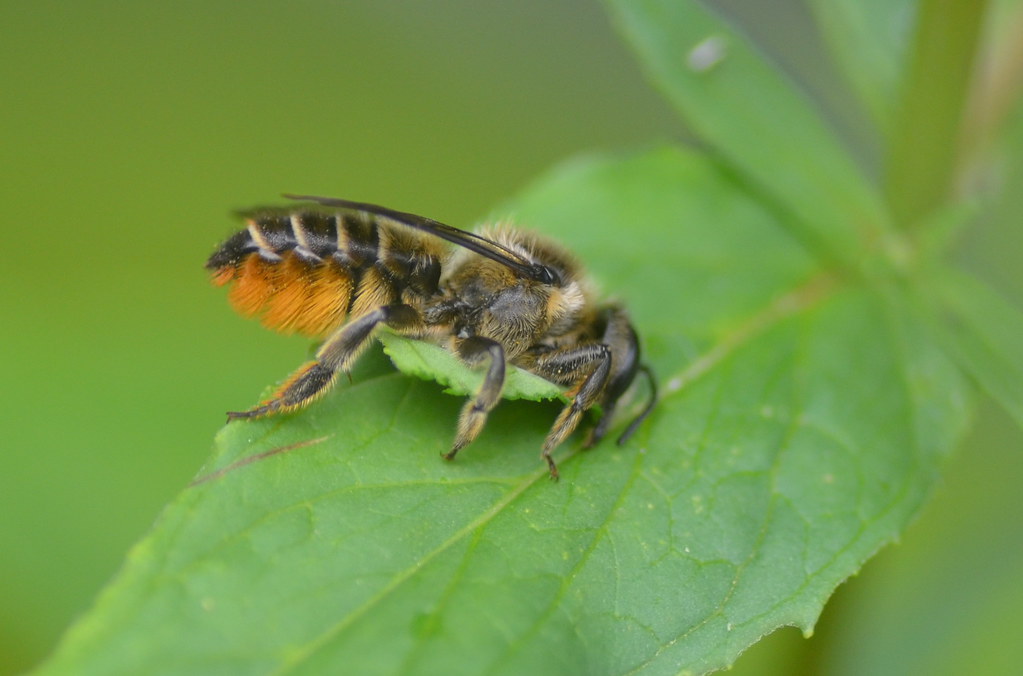
Leafcutter bees are solitary bees that generally nest in pre-existing cavities such as in deadwood, plant stems, wall cavities and bee hotels. Once a female has emerged in early summer and mated, she will set to work on constructing her nest burrow. Within her burrow, a female will use cut leaves to create a series of thimble-like leaf parcels. Each parcel is made up of 10 or more sections of leaf and bound together with a saliva-like substance. Within each of her parcels is an egg supplied with a mixture of nectar and pollen.
Unlike most bees, a female collects pollen using special hairs on her underside rather than on her hind legs. Once a female has finished her nest burrow, she will then ‘plug’ the entrance with more leaf sections. Leaves are collected from a range of plant species, though there is a particular preference for rose leaves and sometimes even petals may be used. The female’s offspring will remain within these burrows until the following year when they will chew their way out as adults.
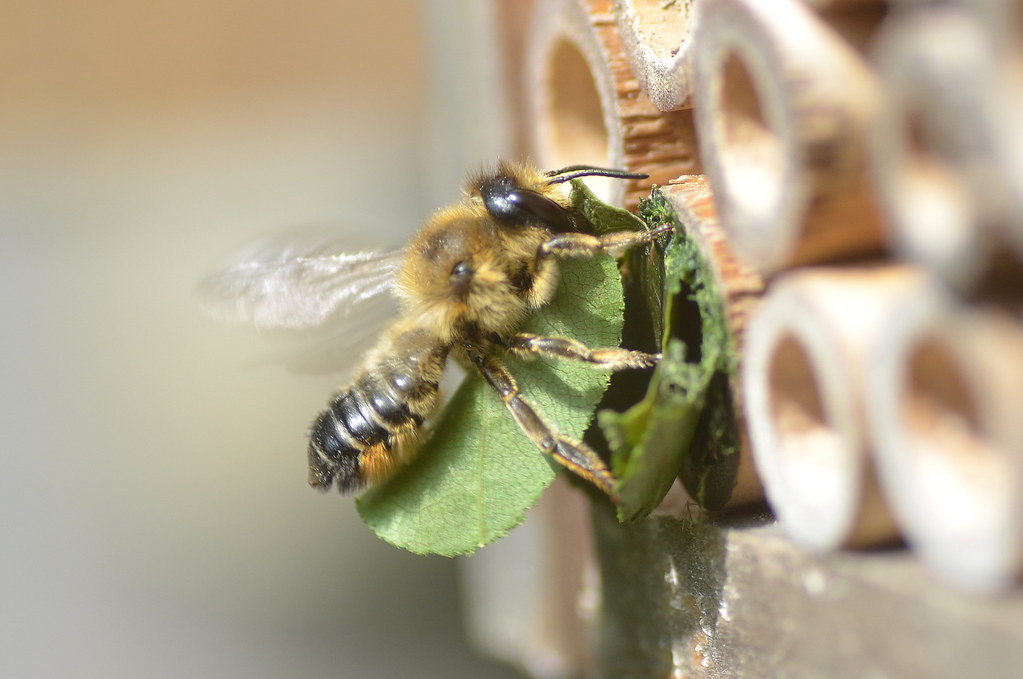
A closer look
Leafcutter bees can be difficult to identify to species, but there are features and tell-tale signs to look out for. These bees are generally the size of a small bumblebee and females have pollen-collecting hairs on their underside that can be covered with pollen. Leafcutter bees also have a unique foraging behavior; they are often found foraging with their abdomens lifted up in the air. The males of some species also have enlarged front legs (‘boxing gloves’) that are used during mating.
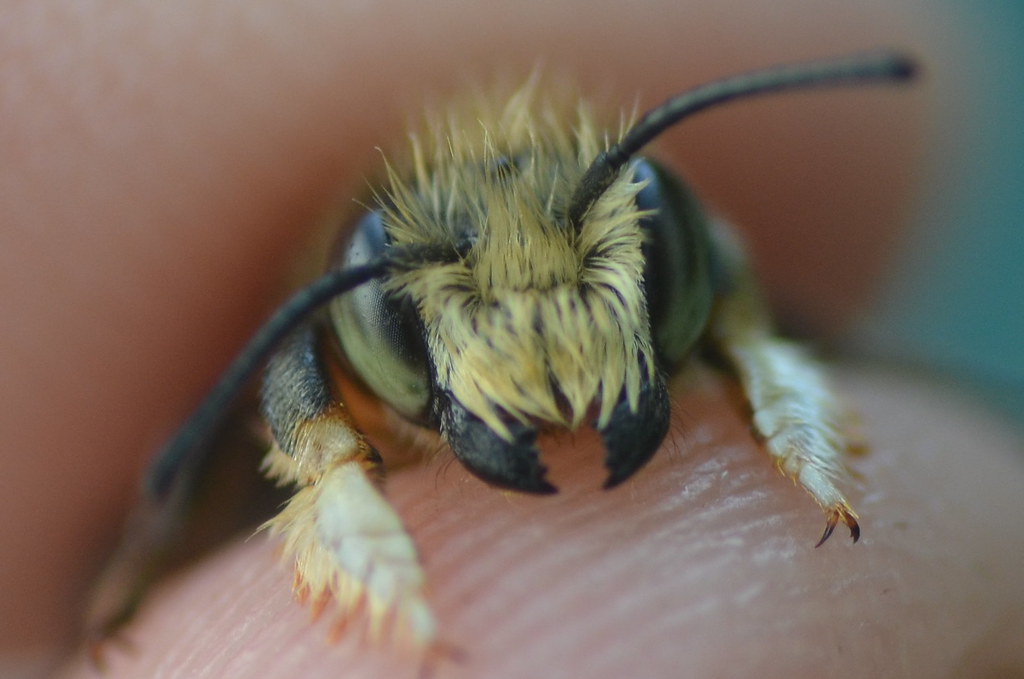
As mentioned, there are also two tell-tale signs related to their nesting habit: look out for bee hotel tubes that have been plugged with leaves or for neat semi-circular holes cut out of your garden plants.
A more distinctive species is look out for in the North East is the Patchwork Leafcutter Bee (Megachile centuncularis). A medium-sized bee, females have a bright-orange pollen brush beneath their abdomens with the orange hairs extending right to the tip. From above, these orange hairs appear as a ‘halo’ around the abdomen. Females can be found occupying bee hotels but also nest in wall cavities and dead wood.
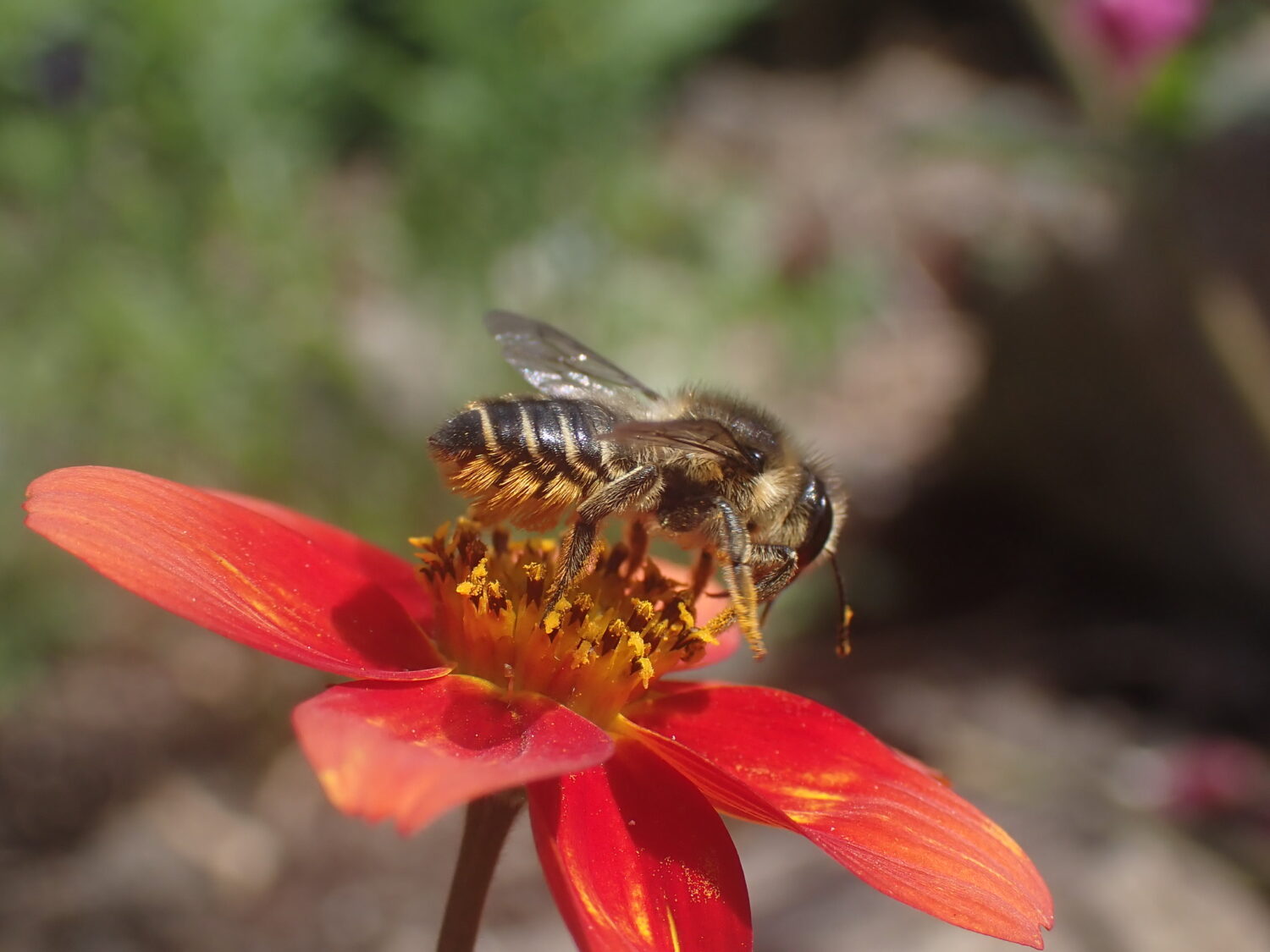
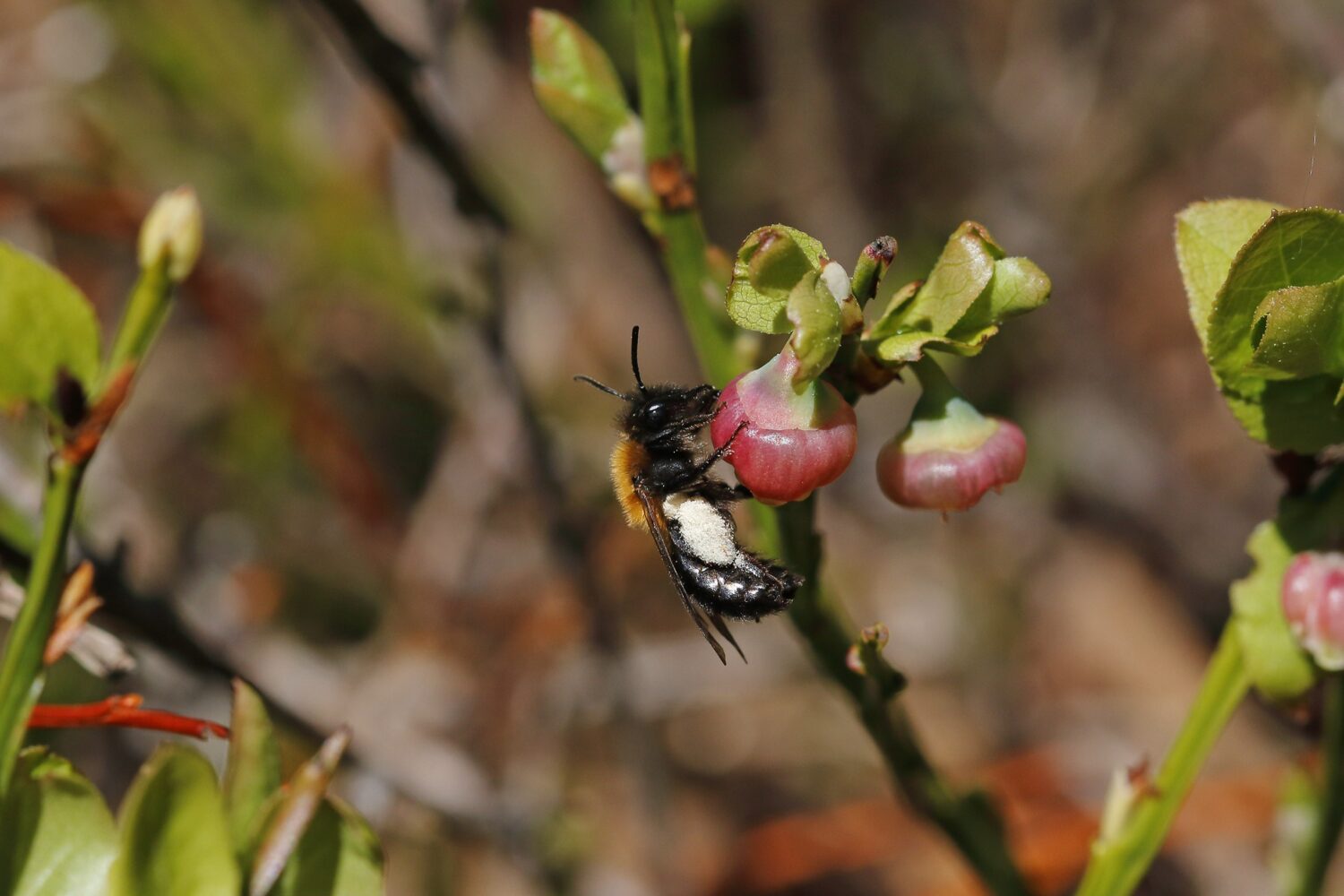
Take part in the North East Bee Hunt
Urban or rural, beginner or expert, we need your help to record eight distinctive bees across the North East this spring and summer.
Your records can add to our understanding of bees in the region and inform conservation and monitoring efforts.
Taking part is easy and every record counts, wherever you live in the region. Records of all bee species are encouraged.